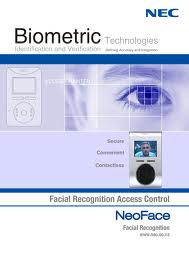Chicago police are spying on citizens from 24,000 surveillance cameras funded by the TSA

Police officers in Chicago, Illinois can remotely access video shot from any of the city’s 24,000 closed-circuit television cameras, and they are already using that ability to nab suspects who thought they could outsmart surveillance.
According to a recent Chicago Sun-Time article by Pulitzer Prize-winning journalist Frank Main, police officers in the Windy City recently issued their first arrest stemming from the use of space-age facial-recognition technology coupled with thousands of cameras that collect live video in real-time at all hours of the day.
Pierre Martin, 34, was arrested on May 2 and charged with armed robbery in connection with two incidents from earlier this year. During one of those events, a video camera owned by the Chicago
Transit Authority (CTA) and wired to the city’s three detective branches and the Criminal Information Prevention Center at police headquarters was rolling when Martin allegedly encountered his victim.
Months later, investigators were able to use the footage recorded using the CTA cameras and comb through a database of 4.5 million criminal booking shots in order to identify Martin as a person of
interest. He is the first individual to be picked up by the CPD using the facial-recognition technology, but only one month after a city-wide roll-out he is likely to not be the last.
The Transportation Security Administration has given the CTA a $5.4 million grant to aid with the program, and that money has been used to update an already impressive arsenal of city-licensed surveillance cameras to run in tandem with NeoFace, a high-tech analysis program used by various governments and law enforcement agencies around the globe to grab biometric data off of an image and match it to another.
According to an April 2013 press release from NeoFace’s parent company, NEC Corporation of America, NeoFace exemplifies “facial recognition as an effective and non-intrusive tool for
identification,” and has been deployed more than 200 times across 30 countries in only a few short years. Its use in Chicago is one of the latest, however, and the arrest of one individual already signals that other cities may follow suit.
The NeoFace technology allows for a match even when part of the subject’s face might be hidden by a hat or sunglasses — or the subject’s head is turned.
Currently, Chicago cops can only rely on pre-recorded footage, with the system configured to avoid real-time surveillance.
Lewin said he did not know how many photos might be submitted for matches, but he said detectives routinely seek surveillance photos as part of their investigations. Over the years, it has become easier to obtain them with all the security cameras linked into the city’s computer network, along with the thousands of businesses that have their own cameras.
“It’s only post-event,” Lewin told the Sun-Times. But as similar programs become introduced elsewhere, the capabilities of systems like NeoFace are likely to put the activity of anyone,
anywhere on the radar of authorities.
Other departments are already benefitting from the high-tech tool. (Big Brother is coming to a city near you)
In Pennsylvania, more than 800 law enforcement agencies are part of an organization that conducts training sessions in facial-recognition technology every two weeks, Lewin said. Officers are asked to bring unidentified photos of suspects to the training sessions — and at least one is identified at every session, Lewin was told.
The Federal Bureau of Investigation has announced plans to have a database of 14 million photographs on file by next year when it rolls out its Next Generation Identification system, which will use surveillance camera clips and other footage to match suspects almost instantaneously up with a pool of persons derived from state DMV photo-shoots and other government-owned images.
http://rinf.com/alt-news/breaking-news/chicago-police-start-using-facial-recognition-software-to-arrest-suspects/50567/
http://www.suntimes.com/21268770-761/chicago-police-go-high-tech-with-facial-recognition-software.html


